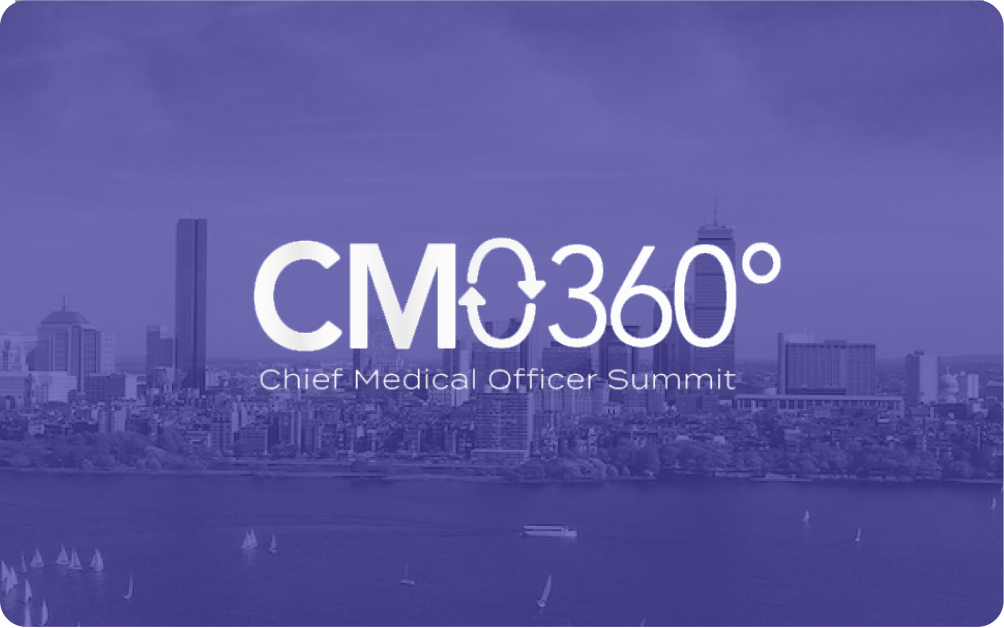CMO Summit 360: Reflections on understanding patient populations, the role of advocacy, and diversity in medical research

Earlier this month, our team had the pleasure of attending the CMO Summit 360 in Boston. This event brought together top-level medical executives and experts from the biotech industry to discuss the latest trends and innovations in clinical decision making, regulatory strategy, communications, business development, and more. Sano sponsored a table at the event, and was excited to chat with and learn from both attendees and speakers. In this blog, we outline three key themes that emerged throughout the event: understanding the patient, engaging patient advocacy groups (PAGs), and driving diversity in medical research.
The need to understand the patient
The conference highlighted the critical role of patient input and engagement in optimising clinical outcomes. In order to design and implement effective clinical trials, it is essential to have a clear understanding of the patient population being studied. This understanding should include a range of factors such as patient demographics, cultural considerations, and patient preferences. Gathering input from real patients and patient advocacy groups at every step of the clinical trial process can help ensure that the research is aligned with patient needs and priorities.
A related, significant issue is site burden. The process of recruiting and engaging patients for clinical trials can be challenging, and the burden of screening ineligible patients and conducting outreach to patients who don’t respond can place a strain on clinical trial sites. More thorough patient screening for both eligibility and interest could address this issue. By focusing on patient-centred approaches and reducing site burden, clinical researchers can better engage patients and promote more effective clinical outcomes.
The importance of patient advocacy groups
In addition, the CMO Summit 360 provided insights into the value of patient advocacy groups for clinical research. The team learned that 64% of cell and gene therapy patients are involved with PAGs, highlighting the critical role that these groups play in patient education and support. The involvement of PAGs can help reduce the barriers that often stand in the way of patients participating in clinical research. Patients may face a range of challenges, such as a lack of knowledge about the research process, concerns about privacy and confidentiality, and difficulty accessing clinical trial sites. PAGs can help address these challenges by providing education, resources, and support to patients.
In fact, the Sano team learned that 80% of patients who are involved with PAGs feel better educated and supported due to this involvement. Patient advocacy groups provide an important source of information and guidance for patients, helping to demystify the research process and make it more accessible and less intimidating. PAGs can also provide an important channel for patient feedback and input. Patients who are involved with these groups can share their experiences and insights with researchers, helping to shape the design and implementation of clinical trials. This can ultimately lead to better outcomes for patients and more effective treatments.
For Sano, the insights gained at the conference underscore the importance of the work we’re doing engaging with patient advocacy groups and building strong relationships with these organisations. By working with PAGs, Sano helps ensure that patients have access to the information, resources, and support they need to participate in clinical research. This can ultimately help accelerate the development of new treatments and therapies, benefiting patients and the broader healthcare community.
The issue of diversity in clinical research
The conference highlighted the critical importance of ensuring diverse patient representation in clinical research. Approximately 40% of Americans belong to racial or ethnic minorities, but in the US in 2020 for example, 75% of trial participants were white, 11% were Hispanic, 8% were Black, and 6% were Asian. This limits the effectiveness of research findings and the potential for equitable access to treatments.
There are several major reasons for the under-representation of communities of colour in clinical trials, including language barriers, lack of specialist access, socioeconomic status, and mistrust due to historical harms. These obstacles can prevent individuals from participating in clinical trials, thereby limiting the diversity of participants and the ability to generalise research findings. By addressing these barriers and working to engage diverse patient populations in clinical research, Sano can help to promote more equitable access to treatments and improve the effectiveness of clinical research.
Wrapping up
The CMO360 Boston Conference was an excellent opportunity for Sano to meet with industry leaders and gain valuable insights into the latest trends and innovations in clinical research – and they even had some fun too, attending their first Red Sox game! The team is already looking forward to next year’s event. In the meantime, if you’d like to discuss how Sano can help drive patient recruitment and engagement for your precision medicine research, get in touch below.
